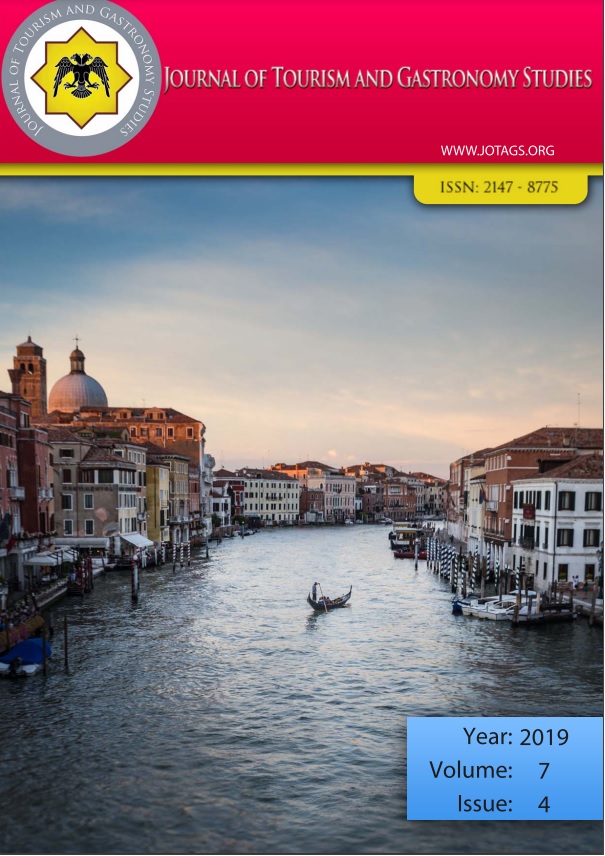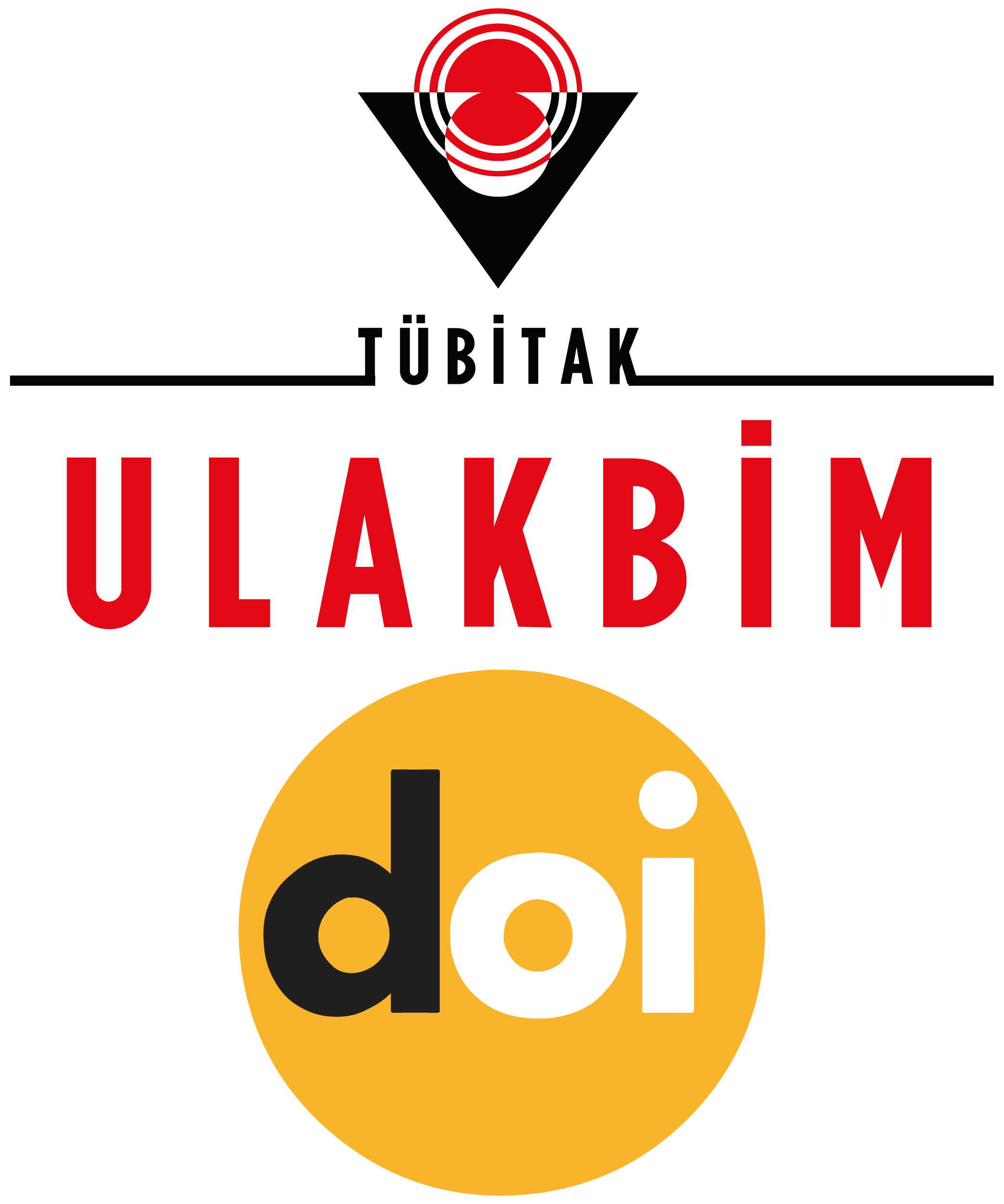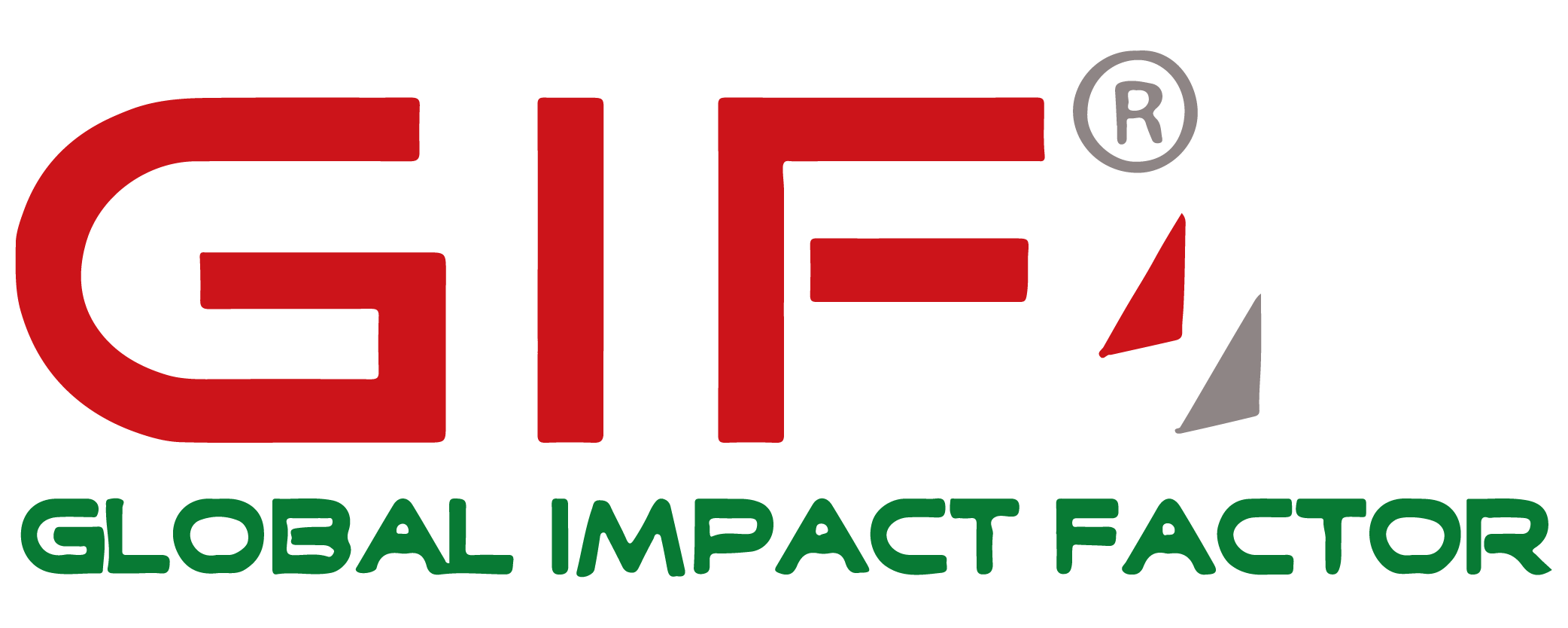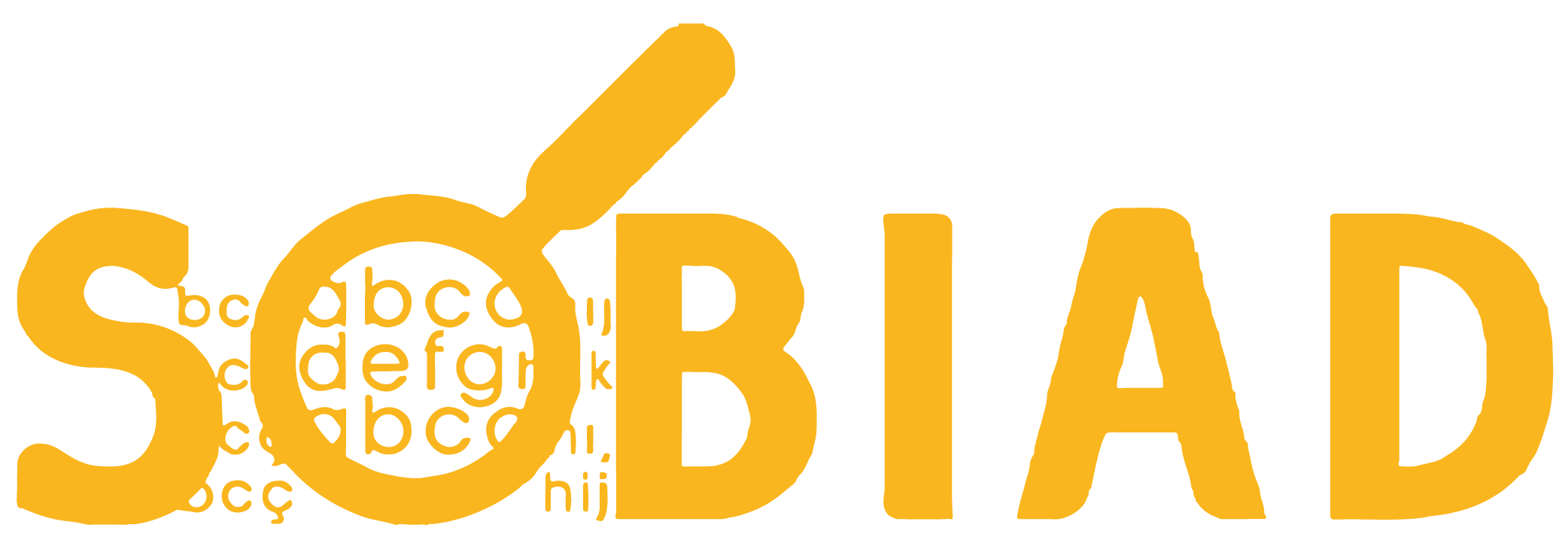Üniversite Öğrencilerinin Yöresel Mutfak Tercihlerinde Sosyal Medyanın Etkisi (The Effect of Social Media in University Students' Local Cuisine Preferences)
DOI:
https://doi.org/10.21325/jotags.2019.522Keywords:
Tourism, Gastronomy, Social media, Local cuisine, Local dishesAbstract
Regarding to the benefits offered, social media is broadly accepted and used by both consumers and food and beverage operations and the number of users is increasing drastically day by day. Social media might be defined as the virtual areas that people interact and communicate with each other, share information and spend their time in a sociable manner. Food and beverage operations which use these virtual areas take the competitive advantage over their rivals. This study is managed in order to reveal the effects of social media on university students regarding to the regional cuisine choices. A questionnaire based on previous studies is applied to 476 volunteer respondent university students face to face. It is revealed within the scope of research that: students use social media frequently, they prefer local food in restaurants and in their residences, students who are having culinary education differentiate about processing food compared to the students who are not having culinary education, local dishes are evaluated as more healthy and delicious, students thought that local dishes are enriching the sense of taste, students the who attend culinary education prefer local restaurants compared to the students who are not attending culinary education, especially students having culinary education are following food and beverage pages on social media and these students are visiting restaurants in order to taste the local dishes that they discovered on social media. Regarding to these findings following recommendations are made: young students might be informed better about local food and cuisine, local food and cuisine might take a broader place in social media and social media might be used as an effective tool regarding to the promotion of local culinary culture and also might be used as an external stimulating environment for the sake of increasing local food consumption among youngsters.
References
Aghaei, S., Nematbakhsh, M. Ali. ve Farsani, H. K., (2012). Evolution of The World Wide Web: From Web 1.0 to Web 4.0 International Journal of Web & Semantic Technology.
Baysal, A., (1993). Türk Mutfağından Örnekler, T. K. K. Basımevi, Ankara.
Bozyiğit, A.E., (1995). Bizde Adet Böyledir, Halk Kültürü Yazıları, Ankara.
Budden, C.B., Anthony, J.F., Budden, M.C. ve Jones, M. A., (2007). Managing The Evolution of a Revolution: Marketing İmplications of Internet Media Usage Among College Students, College Teaching Methods & Styles Journal, 3(3); 1-10.
Cankül, D., Metin, M. ve Özvatan, D., (2018). Yiyecek İçecek İşletmeleri Ve Sosyal Medya Kullanımı, Journal of Gastronomy, Hospitality and Travel, 1(1); 29-37.
Cömert, M. ve Özata, E., (2016). Tüketicilerin Yöresel Restoranları Tercih Etme Nedenleri ve Karadeniz Mutfağı Örneği, Uluslararası Sosyal Araştırmalar Dergisi, 9(42); 1963-1973.
Erdoğan, Z. ve Torun, T., (2009). Bir İlişkisel Pazarlama Aracı Olarak Sanal Topluluklar, Pazarlama ve Pazarla Araştırmaları Dergisi, 45-71.
Erkul, R. E., (2009). Sosyal Medya Araçlarının (Web 2.0) Kamu Hizmetleri ve Uygulamalarında Kullanılabilirliği Türkiye Bilişim Derneği, Ankara.
Eryılmaz, B. ve Şengül, S., (2016). Sosyal Medyada Paylaşılan Yöresel Yemek Fotoğraflarının Turistlerin Seyahat Tercihleri Üzerindeki Etkisi, Uluslararası Türk Dünyası Turizm Araştırmaları Dergisi, 1(1); 32-42.
Genç, Y.E., (2015). Üniversite Öğrencilerinin Sosyal Medya Kullanımı ve Bunun Satın Alma Davranışlarına Etkisi, İzmir Katip Çelebi Üniversitesi Sosyal Bilimler Enstitüsü İşletme Anabilim Dalı, Yüksek Lisans Tezi, İzmir.
Kaplan, A.M.ve Haenlein, M., (2010). Users of The World, Unite! The Challenges and Opportunities of Social Media, Business Horizons, 59-68,
Leeflang, P., Verhoef, P., Dahlström, P. ve Freundt, T., (2014). Challenges and Solutions for Marketing in a Digital Era, European Management Journal, 1-12.
Lu, Y.T., Chen, Z.W. ve Law, R., (2017). Mapping the Progress of Social Media Research in Hospitality and Tourism Management from 2004 to 2014, Journal of Travel & Tourism Marketing, 1-17.
Olgun, B., (2015). Sosyal Medyanın Tüketici Satın Alma Davranışları Üzerindeki Etkisi, Gümüşhane Üniversitesi Sosyal Bilimler Elektronik Dergisi, IV/12, 484-587.
Öcal, S., (1985). Eski Türklerde Yiyecekler, Türk Dünyası Araştırmaları Fındıkoğlu Armağanı, İstanbul.
Öztürk, S., Kadak, M.K., Ayvadoğlu, S., Saat, A., Kütahyalı, E.Ö. ve Köleoğlu, Ö., (2019). Korunan Alan Kaynak Değerlerine İlişkin Ziyaretçi Tercihlerinin Sosyal Medya Verileri Kullanılarak Belirlenmesi, Karabük Üniversitesi Sosyal Bilimler Enstitüsü Dergisi, 9(2); 685-695.
Pate, S.S. ve Adams, M., (2013). The Influence of Social Networking Sites on Buying Behaviors of Millennials, Atlantic Marketing Jounal, II,1: 91-109.
Resti, N. D. ve Purwanegara M. S., (2013). The Psychological Effect of Uploading Food Picture On Social Media to Willingness to Dine Out, Journal of Social and Development Sciences, 4; 316- 324.
Ryan, D. ve Jones, C., (2009). Understanding Digital Marketing: Marketing Strategies for Engaging the Digital Generation, London and Philadelphia: Kogan Page.
Schneider, K.G. ve Ceritoğlu, A.B., (2010). Yöresel Ürün İmajının Tüketici Satın Alma Davranışı ve Yüksek Fiyat Ödeme Eğilimi Üzerindeki Etkisi – İstanbul İlinde Bir Uygulama, Pazarlama ve Pazarlama Araştırmaları Dergisi, 3(6); 29-52.
Statista., (2018). Number of Social Media Users Worldwide from 2010 to 2021 (in billions) https://www.statista.com/statistics/278414/number-of-worldwide-social-network-users/.
Şengül, S. ve Türkay, O., (2016). Yöresel Mutfak Unsurlarının Turizm Destinasyonu Seçimindeki Rolü (Mudurnu Örneği), Uluslararası Yönetim ve İktisat ve İşletme Dergisi, 12(29); 65-66.
Tuten, T.L. ve Solomon, M.R., (2015). Social Media Marketing, Londra: SAGE.
Ural, A. ve Kılıç, İ., (2005). Bilimsel Araştırma Süreci ve SPSS İle Veri Analizi, Detay Yayıncılık, Ankara.
URL-1 (2019). Hangi Üniversite, Üniversiteler, Erişim Tarihi: 15.12.2019, Erişim Adresi: https://www.hangiuniversite.com/universiteler
URL-2 (2019).Yüksek Öğretim Kurulu, Üniversiteler, Üniversitelerimiz, Erişim Tarihi: 15.12.2019, Erişim Adresi: https://www.yok.gov.tr/universiteler/universitelerimiz
Vural, Z.B.A. ve Bat, M., (2010). Yeni Bir İletişim Alanı Olarak Sosyal Medya: Ege Üniversitesi İletişim Fakültesine Yönelik Bir Araştırma, Journal of Yaşar University, 20(5): 3348-3382.
Yarış, A. ve Cömert, M., (2015). Mardin İlindeki Restoranların Yerel Ürün Kullanımındaki Avantaj ve Dezavantajları İle İlgili Algı Düzeyleri, Uluslararası Sosyal Araştırmalar Dergisi, 8 (37); 991-998.
Yazıcıoğlu, Y. ve Erdoğan, S., (2004). SPSS Uygulamalı Bilimsel Araştırma Yöntemleri, Detay Yayıncılık, Ankara.
Downloads
Published
How to Cite
Issue
Section
License
Copyright (c) 2023 Journal of Tourism & Gastronomy Studies

This work is licensed under a Creative Commons Attribution-NonCommercial 4.0 International License.








